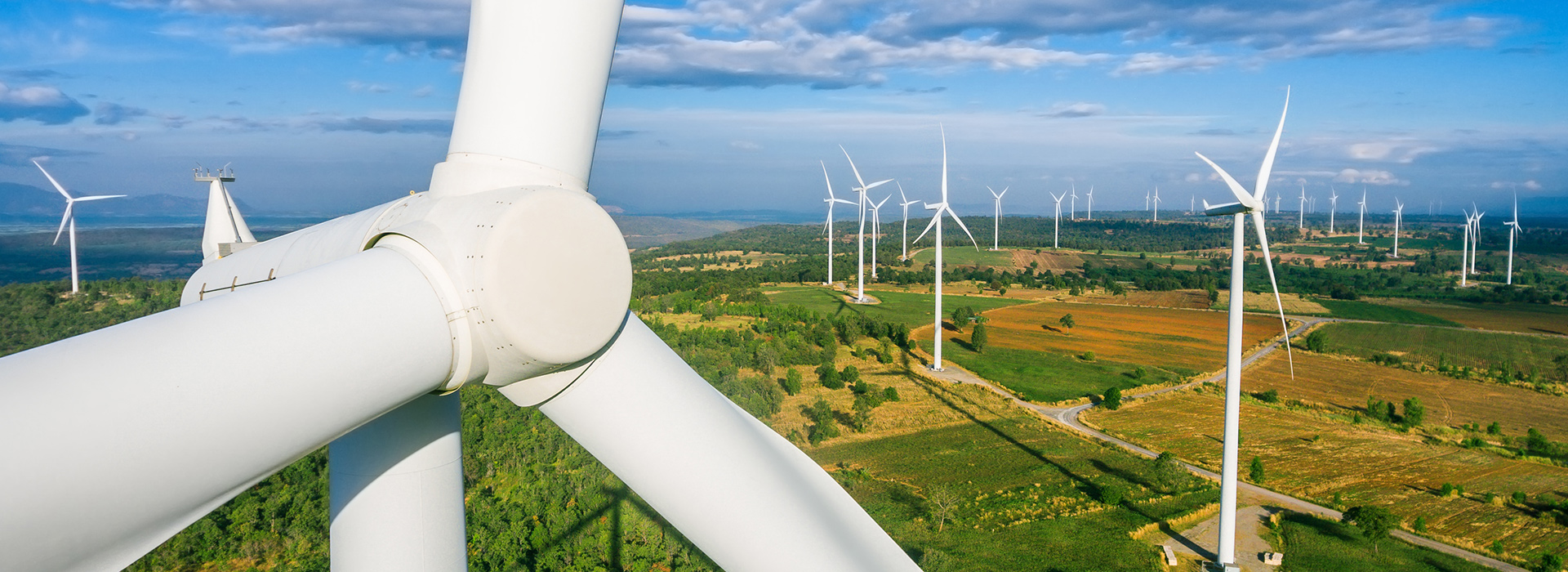Development of Dismantling and Recycling Standards for Rotor Blades
- contact:
-
project group : - funding:
Umweltbundesamt
- partner:
THINKTANK Industrielle Ressourcenstrategien
Institut für Technische Chemie (ITC) am KIT
Fraunhofer-Institut für Chemische Technologie (ICT)
Baumeister Rechtsanwälte
Composites United e.V.
- start:
07/2020
- end:
03/2022

Project Background
Wind turbines are a decisive component in achieving the goals of the energy turnaround in Germany. The number of onshore wind turbines has more than tripled in the last 20 years.[1] In addition to the numerical development, their continuous increase in size and, closely related to this, the increasing complexity of the material composition, is of great importance. The height of wind turbines and their rotor diameters influence the possibility of a uniform energy yield and allow the development of new areas for energy conversion. This leads to the expectation that, within the scope of technical possibilities, the height and especially the rotor diameter will continue to increase in the future.
Due to their operating life and the reduction in EEG payments, wind turbines are increasingly being dismantled due to decommissioning or repowering, and this trend is expected to continue. The possibility of rebuilding disused plants in emerging markets will be made more difficult in future by their increasing size. It can therefore be assumed that new generation turbines will have to be recycled mainly in Germany. The pressure and the necessity to develop conclusive dismantling and recycling concepts for Germany's wind power plants will therefore increase considerably.
In a previous study commissioned by the Federal Environment Agency (UBA) [2] a first, conclusive and complete dismantling and recycling concept was developed. Conceptual proposals for high-quality and complete plant recycling were developed and organisational obligations were assigned to manufacturers, operators and owners.
From the perspective of high-quality recycling, composite materials - carbon fibre reinforced (CFRP) or glass fibre reinforced (GRP) plastics - are a particular challenge. The composite materials are mainly found in the rotor blades, making them a key component in the dismantling of wind turbines. In the case of the rotor blades, it is often unclear which materials were used because of the large number of makes. Especially with longer rotor blades, one must always expect to find layers of CFRP. In the UBA study mentioned above, these composite materials play only a minor role. In the next few years, however, the increasing proportion of CFRP-containing waste will pose a particular challenge for health and environmental protection reasons during dismantling, shredding and processing, and as a disruptive factor for the established recycling of CFRP and due to the ultimate lack of safe disposal. Here, too, the organisational responsibility for the highest possible quality recycling plays an important role.
[1] https://de.statista.com/statistik/daten/studie/20116/umfrage/anzahl-der-windkraftanlagen-in-deutschland-seit-1993/ (geprüft am 24.4.2020)
[2] UBA-Texte 117/2019: Entwicklung eines Konzepts und Maßnahmen für einen ressourcensichernden Rückbau von Windenergieanlagen, Dessau-Roßlau, 2019
Objective
The goal of developing a high-quality and at the same time economically reasonable treatment strategy for rotor blades is derived from the project background described above. In this strategy, all components of a rotor blade are to be recycled in a high-quality and harmless manner. At the same time, proposals for the organisational responsibility of each individual work step are to be developed.
For this purpose, the following areas are considered and evaluated:
- Rotor blade design,
- Risk assessment of fibres and dust,
- waste treatment on the construction site,
- Processing of rotor blade waste,
- recycling of processed rotor blade waste and
- Organizational responsibility
Starting from the place of dismantling, through transport to processing and forwarding of the waste fractions that are as optimal as possible for high-quality recycling, the various process steps are described and evaluated. From this, a conclusive concept for a dismantling, preparation and treatment strategy that is as standardised as possible is to be developed for the rotor blade waste streams that will be generated over the next 20 years. Based on this concept, the organisational responsibility will be examined from a legal point of view and proposals will be developed.
Project Partners
The project is commissioned by the Federal Environment Agency and is being carried out with several project partners. The THINKTANK Industrial Resource Strategies is located at KIT and coordinates the work. The KIT Institute for Technical Chemistry (ITC) and the Fraunhofer Institute for Chemical Technology (ICT) deal with technical issues and the law firm Baumeister Rechtsanwälte with legal issues. The network Composites United e.V. will support with its existing knowledge and partnerships.
